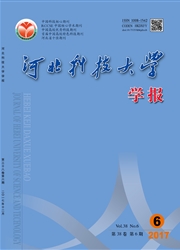

 中文摘要:
中文摘要:
突变理论是解释不连续现象的一种旨在应用的数学方法,自诞生以来广泛用于解释自然科学、社会科学和管理科学等科学技术领域的各种突发现象。首先,从突变理论的产生、基本原理、基本特性和发展过程等几个方面对其进行了简要介绍;其次,综述了突变理论在机械工程领域的应用现状,重点介绍了利用突变理论在揭示转子振动状态突变现象、分析摩擦磨损失效行为和预测金属疲劳断裂等3个方面的研究进展;最后,指明了在以后的应用中要更加注重加强突变理论与一些传统非线性理论的结合。可为突变理论在机械工程等相关领域的进一步拓展应用提供有益的理论参考。
 英文摘要:
英文摘要:
Catastrophe theory is a kind of mathematical method which aims to apply and interpret the discontinuous phenome- non. Since its emergence, it has been widely used to explain a variety of emergent phenomena in the fields of natural science, social science, management science and some other science and technology fields. Firstly, this paper introduces the theory of catastrophe in several aspects, such as its generation, radical principle, basic characteristics and development. Secondly, it summarizes the main applications of catastrophe theory in the field of mechanical engineering, focusing on the research progress of catastrophe theory in revealing catastrophe of rotor vibration state, analyzing friction and wear failure, predicting metal fracture, and so on. Finally, it advises that later development of catastrophe theory should pay more attention to the combina- tion of itself with other traditional nonlinear theories and methods. This paper provides a beneficial reference to guide the appli- cation of catastrophe theory in mechanical engineering and related fields for later research.
 同期刊论文项目
同期刊论文项目
 同项目期刊论文
同项目期刊论文
 A cusp catastrophe model for the frictioncatastrophe of mine brake material in continuous repeated b
A cusp catastrophe model for the frictioncatastrophe of mine brake material in continuous repeated b 期刊信息
期刊信息
